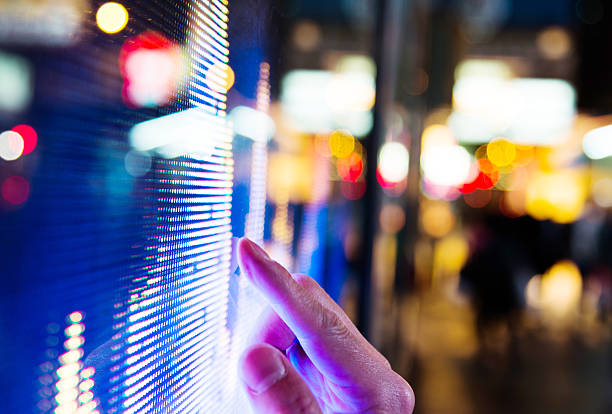Moisture insulation and waterproofing are two different things. Waterproofing is the protection against liquid water, while moisture sealing is the protection against moisture and water.
The packaging material of LED displays is mainly made of plastic, such as epoxy resin. Plastic is a high molecular weight material, and the distance between molecules in high molecular weight materials is large. Water molecules containing vapor can enter the shell through these gaps, but the liquid molecules are charged by themselves. And since they are not very mobile, their degree of diffusion is much lower.
The LED devices, outdoor lamp beads device by structural design to match the waterproof function of the product, but regardless of the exterior, indoor lamp beads, due to the properties of plastic materials, all the electronic components are sensitive to moisture.
The LED element is wet, the water vapor enters the bead lamp. The water vapor in the air enters the bead bulb, and when voltage is applied, the halogen in the water vapor reacts with the metal in the bead bulb, causing a serious short circuit and leakage of the chip. Or the electrodes fall off, causing the xenon filament or screen to glow.
In China, March is approaching every year and the weather is quite wet. It is especially important to store and use LED displays properly.
Firstly, to use LED display
- Make sure the cables and switches are not wet to avoid leakage or electric shock.
- Moderate ventilation helps the water vapor on the display to evaporate quickly and reduce the relative humidity in the rooms. However, avoid ventilating the room without an air supply, as this will increase the humidity in the room.
- Use an air conditioner to remove moisture and use desiccants to physically absorb moisture, which can help dry the screen and prevent water damage. Visit also: Smd Screen
- Do not disassemble the indoor LED screen outside, in a rainy day should immediately turn off the power, immediately disassemble the screen ** with a prepared rain cloth to cover, take the sun box to dry. If it continues to rain ** use a fan to open the back panel of the box to let in dry air. Then let it dry for at least 8 hours in a dry, well ventilated area. The low intensity guarantee point will remain bright for more than 4 hours and the moisture in the electronic components will be completely removed.
- During the rainy season, please turn on the LED screen at least once a week, at least once a month, for at least 2 hours, in order to open the screen.
- The environment of outdoor displays is complex, and it is inevitable that water will enter the case. In addition to the above measures, it is usually necessary to regularly inspect the rubber seal of the housing for signs of aging, deformation, or defect, and the screws and locks of the waterproof housing for looseness or lack of pressure.
- Screen housings that have been installed for a long time should be energized and serviced regularly. Whether it is a built-in or the external LED display, there is a good chance that it will not turn on or will malfunction if it is not used for a long period of time while turned on. If you know how to maintain it, you can avoid this kind of problem completely.
Also, read more: LED Display Marketing and Advantages of Flexible LED Display
The second is to properly treat a tarnished LED display.
- Dry the wet LED display screen complete with a fan.
- A completely burned out screen is under power and gets old. The concrete procedure is as follows
- Set the brightness (a white color) to 10% and leave the power on for 8-12 hours.
- Set the brightness (a white color) to 30% and leave it on for 12 hours.
- Brightness (a white color) set to 60% and stored for 12 to 24 hours.
- Brightness (one color white) set to 80%, stored for 12 to 24 hours.
- Set the brightness (all white) to ** and leave the unit on for 8 to 12 hours.
Third: LED indication during storage
- The air box and packing box should be dried and the desiccants and packing materials exposed to water vapor should be dried in time and not come into contact with water.
- The storage space of the screen should be dry and the industrial dehumidifier should be installed in a high place.
- After a rainfall, the LED indicator will light up to indicate the problem. If necessary, contact the manufacturer for technical assistance.
Conclusion on moisture protection.
- Choose a high quality manufacturer to produce a high quality LED display.
- Carry out regular inspection and maintenance to avoid accidents and extend the service life.
- Develop good habits among technicians and learn to use science.
Also, read further:
What Is the Difference Between SMD And Dip Display In Outdoor Advertising Screens?
